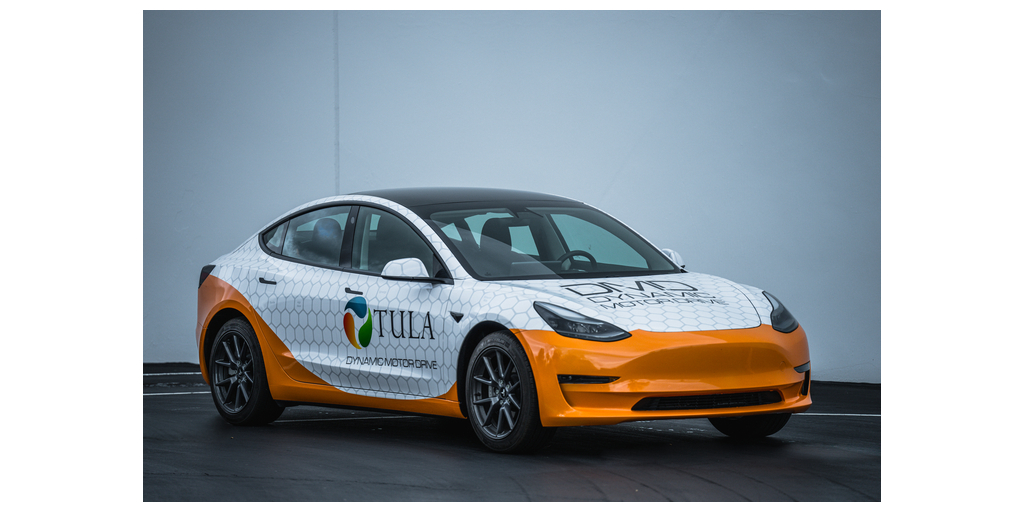Sign up for daily news updates from CleanTechnica on email. Or follow us on Google News!
The US Army has been demonstrating a versatile new zero emission hydrogen fuel cell electric rescue truck, capable of going 1,500 miles before it needs a refill. The only thing missing is green hydrogen to recharge the tanks with renewable fuel. That is also in the works, in the form of a stumpy little solar-powered electrolysis machine on wheels. Though still in the prototype phase, the new mobile hydrogen generator could have an outsized impact on military operations in remote locations.
A Fuel Cell Electric Rescue Truck For The US Army
Fuel cells produce electricity from a chemical reaction between hydrogen and ambient air, shepherded by a catalyst. Water is a byproduct of the reaction. Other than that, fuel cell electric vehicles are emission-free.
The Department of Defense has been cautious about incorporating electric vehicles of any sort into its procurement web, whether they go on battery power or fuel cells. Still, activity in both areas has been ramping up in recent years. Aside from being emission-free, EVs have a silent running advantage over internal combustion engines and they support the Defense Department’s climate action goals.
The new H2Rescue fuel cell truck began as a brainstorming exercise five years ago, aimed at improving the Army’s natural disaster and emergency response capabilities. “When we came up with the idea, there [were] the California wildfires going out west, there were a couple of hurricanes in the southeast and we knew that big swaths of the U.S. were having these natural disasters [and] that customers didn’t have power, water and were just devastated,” explains the technical lead on the project, Nicholas Josefik.
H2Rescue is still in the prototype phase, with a driving range of about 1,500 miles. That is impressive, but it’s not the only use for the fuel cells. An article posted on the US Army website provides additional details using the example of a 180-mile trip to an emergency response staging area. Once there, H2Rescue can deploy its fuel cells to provide the equivalent of power, heat, and water for 15 homes over a period of three days. That includes providing stationary power for its own systems, enabling it to serve as a warming or cooling center as well as a mobile command center.
The Advantages Of A Fuel Cell Vehicle
The water contribution can be substantial. The Army estimates that one full tank of hydrogen can enable H2Rescue’s fuel cells to produce 200-400 gallons of water as a byproduct.
The Army began staging H2Rescue field demonstrations around the US last year. Next steps include purifying water from the fuel cells, so it can be used for human consumption.
The long term goal is to introduce a fuel cell vehicle in support of soldiers in the field, building on lessons learned from H2Rescue. Aside from cutting down on noise and pollution from diesel equipment at forward operating bases, Josefik notes that fuel cells simplify the logistics web.
In contrast to bringing in diesel generators and fuel tankers under an ICE vehicle scenario, a fuel cell truck offers a compact, multi-use package. “It could be applied in the forward operating base because instead of having to bring in those three different pieces of equipment, now you drive your vehicle to the location and your vehicle is your power generator,” Josefik explains.
What About The Hydrogen?
In terms of the Defense Department’s climate action goals, the problem is the supply chain for the hydrogen that goes into fuel cell vehicles. Hydrogen is a widely used industrial input, but for the time being, the global hydrogen market depends on extraction from natural gas, with coal also playing a role.
Some fossil energy stakeholders aim to wedge fossil-sourced hydrogen into the category of “clean hydrogen,” with the help of carbon capture systems. Nice try. Meanwhile, stakeholders in the emerging green hydrogen field are betting that water electrolysis will be the basis of a sustainable supply chain (see more green hydrogen background here).
Getting the cost of green hydrogen down to parity with gas or coal is the challenge. However, cost is not the be-all and end-all for military purposes. Getting the right fuel at the right time is a priority. Electrolysis systems can run on water and renewable energy scavenged locally, which is a significant advantage compared to the conventional hydrogen supply chain.
Earlier this year, CleanTechnica caught wind of a Defense Department fuel cell and green hydrogen microgrid project at at Joint Base Pearl Harbor-Hickam in Hawaii. Putting a scaled-down solar-powered electrolysis system on wheels and hauling it around to remote locations to generate green hydrogen for fuel cell vehicles is another area of exploration.
The US firms NovaSpark Energy and Zephyr Flight Labs have been working on one such mobile green hydrogen project under the wing of the Pentagon’s Defense Innovation Unit (DIU), with the aim of generating fuel in “austere and isolated environments.”
“Leveraging hydrogen fuel cells gives operating forces new capabilities. These include longer flight and drive ranges, less electronic signature, lower maintenance requirements, higher energy resilience, and, most importantly, reduced dependence on fuel supply chains, which are vulnerable to disruption in contested logistics environments,” DIU explained in a press release earlier this year.
One Step Closer To A Tactical Fuel Cell Electric Vehicle
If you caught that thing about drive ranges, that’s interesting. Tactical fuel cell electric vehicles have been bubbling under the surface over at the Defense Department, but it appears that DIU is already anticipating a breakthrough. DIU includes tactical vehicles in its list of potential uses for green hydrogen at remote locations. Unmanned aerial systems, balloons, and other equipment are also on the list.
Keep an eye on General Motors, too. The company began its fuel cell journey all the way back in 1966 with the Electrovan. In terms of vehicle electrification, fuel cells have taken a back seat to battery EVs, but GM is among the automotive stakeholders anticipating that fuel cells will eventually find a foothold.
The strategy suffered a setback in 2020 after GM hooked up with fuel cell truck maker Nikola, which promptly ran into a brick wall of scandal. Now it appears that GM is back on track. In 2021, the company’s Hydrotec division began collaborating with the global firm Liebherr on a hydrogen-fueled aircraft project.
GM has also been working with the firm Nel ASA to help push down the cost of green hydrogen. This holistic fuel-to-vehicle strategy builds on GM’s ongonig efforts to improve access to battery EV charging and renewable electricity.
This year, GM and Nel have been developing a fuel cell truck and green hydrogen microgrid pilot project funded by the SuperTruck 3 program of the US Department of Energy, so stay tuned for more on that.
Follow me via LinkTree, or @tinamcasey on Threads, LinkedIn, and Instagram.
Photo (cropped): The US Department of Defense is developing nimble, mobile green hydrogen generators for fuel cell electric vehicles, aircraft, and equipment in remote locations (prototype photo courtesy of Zephyr Flight Labs).
Have a tip for CleanTechnica? Want to advertise? Want to suggest a guest for our CleanTech Talk podcast? Contact us here.
Latest CleanTechnica.TV Videos
CleanTechnica uses affiliate links. See our policy here.
CleanTechnica’s Comment Policy





